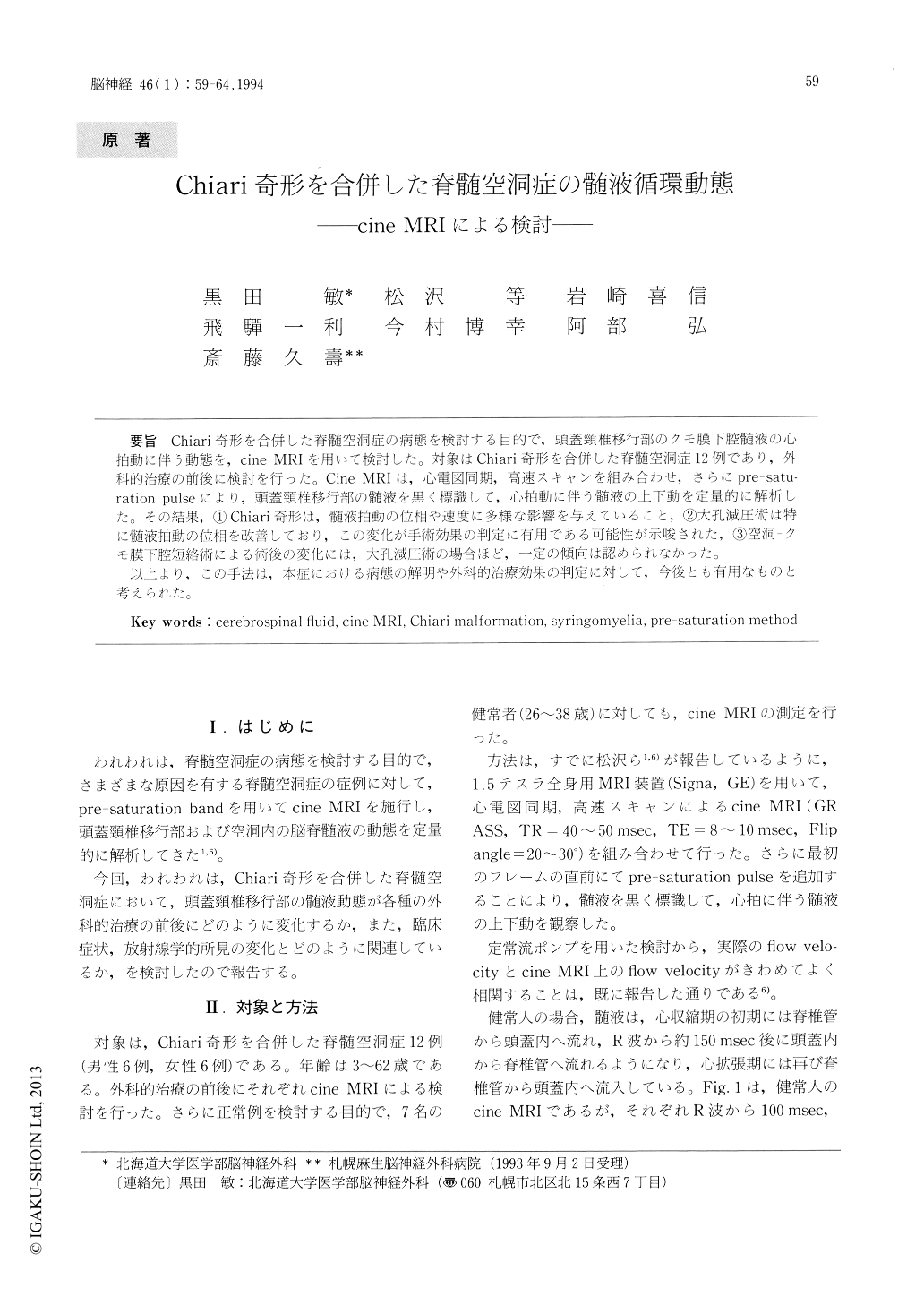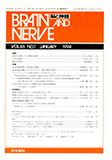Japanese
English
- 有料閲覧
- Abstract 文献概要
- 1ページ目 Look Inside
Chiari奇形を合併した脊髄空洞症の病態を検討する目的で,頭蓋頸椎移行部のクモ膜下腔髄液の心拍動に伴う動態を,cine MRIを用いて検討した。対象はChiari奇形を合併した脊髄空洞症12例であり,外科的治療の前後に検討を行った。Cine MRIは,心電図同期,高速スキャンを組み合わせ,さらにpre-satu—ration pulseにより,頭蓋頸椎移行部の髄液を黒く標識して,心拍動に伴う髄液の上下動を定量的に解析した。その結果,①Chiari奇形は,髄液拍動の位相や速度に多様な影響を与えていること,②大孔減圧術は特に髄液拍動の位相を改善しており,この変化が手術効果の判定に有用である可能性が示唆された,③空洞—クモ膜下腔短絡術による術後の変化には,大孔減圧術の場合ほど,一定の傾向は認められなかった。
以上より,この手法は,本症における病態の解明や外科的治療効果の判定に対して,今後とも有用なものと考えられた。
In a series of 12 patients with syringomyelia associated with Chiari's malformation, the authors quantitatively analyzed cerebrospinal fluid (CSF) dynamics in the subarachnoid space of the cranio-spinal junction, using cine MRI combined with pre-saturation method.
In most of subjects, cine MRI revealed (1) de-creased or increased maximum velocity of CSF in the caudal direction and (2) disturbed CSF motion in the caudal direction (delayed% cardiac cycle) in the craniospinal junction, strongly suggesting distur-bed CSF dynamics in the craniospinal junction because of the tonsilar herniation.

Copyright © 1994, Igaku-Shoin Ltd. All rights reserved.


